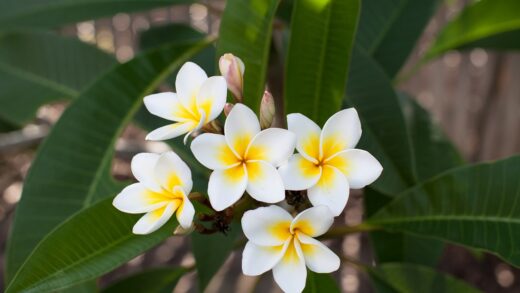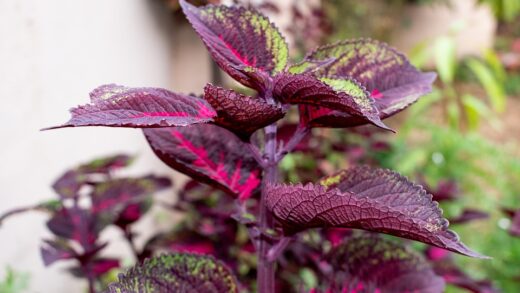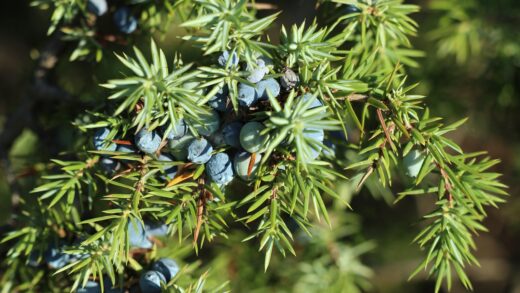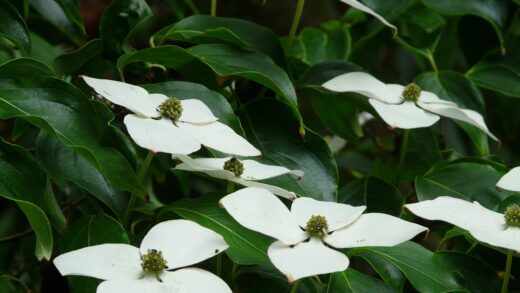While peppermint is a vigorous and relatively unfussy herb, providing it with the appropriate nutrients through proper fertilization is key to unlocking its full potential for lush growth and intense aromatic flavor. The plant’s rapid growth rate during the spring and summer means it can quickly deplete the nutrients available in the soil. A well-thought-out fertilization strategy ensures the plant has a steady supply of the essential elements it needs to produce an abundance of healthy, flavorful leaves. Understanding what to feed your peppermint, when to feed it, and how much to apply will result in a more robust and productive plant.
Peppermint generally benefits from a balanced supply of macronutrients: nitrogen (N), phosphorus (P), and potassium (K). Nitrogen is particularly important as it is a primary component of chlorophyll and is directly responsible for promoting vigorous, leafy green growth. Phosphorus plays a crucial role in root development and energy transfer within the plant, while potassium contributes to overall plant health, disease resistance, and the regulation of water uptake. A soil rich in organic matter, such as compost, often provides a good baseline of these nutrients, but supplemental feeding can be beneficial, especially for container-grown plants.
The need for fertilization is most pronounced for peppermint grown in pots or containers. The limited volume of soil means that the initial nutrient supply is finite and is used up more quickly by the plant’s roots. In contrast, peppermint planted in a well-amended garden bed has access to a larger reservoir of nutrients and the complex ecosystem of soil life that helps to cycle them. However, even in-ground mint can benefit from an annual application of compost or a balanced fertilizer to replenish what was consumed during the previous growing season.
It is important to avoid over-fertilizing, as this can be just as detrimental as nutrient deficiency. An excess of nitrogen, for example, can lead to excessively rapid, weak growth that is more susceptible to pests and diseases like aphids and powdery mildew. More importantly for an herb, an overabundance of nitrogen can sometimes lead to a decrease in the concentration of the essential oils responsible for its characteristic flavor and aroma. The goal is to provide a balanced and steady supply of nutrients that supports healthy growth without forcing it unnaturally.
Peppermint’s basic nutritional needs
At its core, peppermint’s nutritional requirements are geared towards supporting its primary function: producing a large amount of foliage. This makes nitrogen the most critical nutrient in its diet. Nitrogen is the engine of leafy growth, a key building block for amino acids, proteins, and chlorophyll. A sufficient supply of nitrogen ensures the leaves are a deep, vibrant green and that the plant continually produces new stems and shoots. A lack of nitrogen is often the first deficiency to become apparent, manifesting as yellowing of the lower, older leaves and overall stunted growth.
More articles on this topic
While nitrogen fuels the top growth, phosphorus is essential for the processes happening below the soil and at a cellular level. It is vital for strong root development, which is the foundation of a healthy plant, enabling it to efficiently absorb water and other nutrients. Phosphorus is also a key component of ATP (adenosine triphosphate), the molecule that stores and transports energy throughout the plant. This makes it crucial for photosynthesis and other metabolic processes. Although required in smaller quantities than nitrogen for an herb like mint, a phosphorus deficiency can lead to poor root systems and slow, weak growth.
Potassium, the third primary macronutrient, acts as a regulator and a protector for the plant. It plays a pivotal role in managing the plant’s water relations by controlling the opening and closing of stomata, the small pores on the leaves that regulate gas exchange and water vapor release. Adequate potassium levels improve the plant’s overall hardiness, its resistance to drought stress, and its ability to fight off diseases. It also contributes to the synthesis of proteins and starches, supporting the plant’s overall structural integrity and vigor.
Beyond these three macronutrients, peppermint also requires a range of micronutrients, albeit in much smaller quantities. These include elements like magnesium, which is a central component of the chlorophyll molecule, as well as calcium, sulfur, iron, and manganese. In most cases, a healthy soil rich in organic matter will contain sufficient levels of these micronutrients. Using compost or a balanced, all-purpose fertilizer will typically provide all the trace elements the plant needs to thrive and develop its complex and potent essential oils.
Choosing the right fertilizer
When it comes to selecting a fertilizer for your peppermint, you have several excellent options, and the best choice often depends on your gardening philosophy and the specific growing situation. For a simple and effective approach, a balanced, all-purpose liquid or granular fertilizer is a great choice. Look for a product with a balanced N-P-K ratio, such as 10-10-10 or 20-20-20. These formulations ensure that the plant receives an even supply of the three main macronutrients. Liquid fertilizers are fast-acting and are typically diluted with water and applied every few weeks, making them ideal for container plants that need regular feeding.
More articles on this topic
For those who prefer an organic approach, there are numerous excellent alternatives to synthetic fertilizers. Compost is arguably the best all-around soil amendment and fertilizer for peppermint. It is a slow-release source of a wide range of macro- and micronutrients, and it also vastly improves soil structure, water retention, and microbial life. Working a generous layer of compost into the soil before planting and top-dressing with it annually is often sufficient to meet the nutritional needs of garden-grown peppermint. Other organic options include well-rotted manure, fish emulsion, and alfalfa meal.
Fish emulsion is a particularly good organic liquid fertilizer for promoting leafy growth due to its relatively high nitrogen content. While it has a distinct odor that dissipates after a day or so, it provides a quick boost of nutrients that is readily available to the plants. It should be diluted according to the package directions and can be applied every three to four weeks during the active growing season. This is an excellent choice for revitalizing potted mint that is starting to look pale or tired mid-season.
It is generally advisable to avoid fertilizers that are excessively high in nitrogen, such as lawn fertilizers. While these will certainly promote rapid green growth, this growth can be weak and sappy, making the plant more attractive to pests like aphids. More importantly, this type of forced growth can occur at the expense of essential oil production, resulting in leaves that are less flavorful and aromatic. The goal is to encourage steady, healthy growth, and a balanced or compost-based approach is the most effective way to achieve this.
Application timing and frequency
The timing of fertilizer application is just as important as the type of fertilizer you use. The primary feeding window for peppermint is during its period of active growth, which typically runs from spring through late summer. You should begin fertilizing in the spring, just as new shoots start to emerge from the soil. This initial feeding provides the plant with the necessary resources to fuel its first major flush of growth. Continuing to feed the plant throughout the late spring and summer will support sustained leaf production.
The frequency of application depends on the type of fertilizer you are using. If you are using a water-soluble liquid fertilizer, a common recommendation is to apply it every three to four weeks for container-grown plants, and perhaps every four to six weeks for in-ground plants. Always follow the dilution rates specified on the product label, as a mixture that is too concentrated can burn the plant’s roots. It is often better to err on the side of caution and use a slightly more diluted solution more frequently than a strong solution infrequently.
If you are using a granular slow-release fertilizer, one application in the spring is often sufficient to last for several months. These fertilizers are designed to break down gradually over time, providing a steady, consistent supply of nutrients to the plant. Simply sprinkle the recommended amount around the base of the plant, gently work it into the top layer of soil, and water it in thoroughly. For organic amendments like compost or manure, an annual application in the spring is usually adequate for garden beds.
It is crucial to cease fertilizing towards the end of the growing season, typically in late summer or early autumn. Continuing to feed the plant, especially with nitrogen-rich fertilizers, will encourage tender new growth that will not have enough time to harden off before the first frost. This new, soft growth is extremely susceptible to frost damage, which can harm the overall health of the plant as it enters winter dormancy. Allowing the plant to slow its growth naturally is an important part of preparing it for the winter months.
Recognizing nutrient deficiencies
Learning to read your peppermint plant’s leaves can provide valuable clues about its nutritional health. While peppermint is generally robust, specific nutrient deficiencies can manifest as visible symptoms. The most common deficiency is a lack of nitrogen. This typically appears as a general yellowing, or chlorosis, of the leaves. Critically, this yellowing will start with the older, lower leaves on the plant first, as nitrogen is a mobile nutrient that the plant will move from older tissues to support new growth. The plant may also appear stunted with weak, spindly stems.
A phosphorus deficiency, while less common, can also occur. The tell-tale sign of a lack of phosphorus is often a purplish or reddish tinge to the leaves and stems. This discoloration is due to an accumulation of sugars that cannot be converted into energy effectively without adequate phosphorus. Growth will be noticeably slow, and the plant’s root system will be underdeveloped, making it less resilient to stress. This symptom is often more pronounced in young plants or during periods of cool weather when phosphorus uptake from the soil can be inhibited.
Potassium deficiency can be identified by looking at the edges of the leaves. It typically starts with a yellowing or browning along the margins or tips of the older, lower leaves, while the center of the leaf remains green. As the deficiency progresses, these brown areas may become necrotic and die. A plant lacking sufficient potassium will also have weaker stems and a reduced ability to withstand drought, heat stress, and disease, appearing generally less vigorous than a well-nourished plant.
If you notice these symptoms, the first step is to consider your recent fertilization practices. If you have not fed the plant in a while, applying a balanced liquid fertilizer can often correct the issue quickly. Using compost as a mulch or soil amendment is an excellent long-term strategy for preventing deficiencies, as it provides a broad spectrum of nutrients. It is also important to ensure the soil pH is within the optimal range of 6.0 to 7.0, as an improper pH can “lock up” nutrients in the soil, making them unavailable to the plant even if they are present.



















